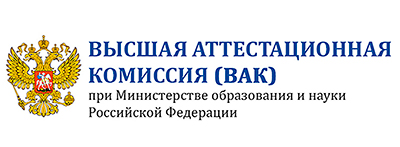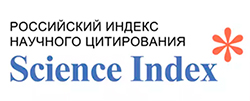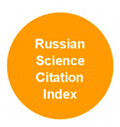Life expectancy of elderly in Russia depending on educational status
Abstract
Russia is currently experiencing an increase in the proportion of the population belonging to senior age cohorts. This process is paralleled by changes in the educational structure, as comparatively more educated groups enter senior ages. In this paper we analyze the differences in mortality and life expectancy depending on the level of education for Russians aged 50 and older. We estimate life tables for people at these ages. Our estimates are based on the RLMS-HSE longitudinal survey for the period from 1994 to 2015. We take into account all the waves of the survey from the 5th to the 24th. Life tables are estimated separately for men and women. Apart from general life tables for each sex, we also estimate life tables for people with low educational status and high educational status (also segregated by sex). People with 10 years or less of education are considered to have low educational status, while those with more than 10 years of education are regarded as having high educational status. Our calculations reveal that at the age of 50, men with high educational status have life expectancy values 3 years higher than their counterparts with low educational status. As for women, at the same age of 50, those with high educational status have life expectancy values 4.4 years higher than their counterparts with low educational status. Our results reveal that a remarkable difference still persists in life expectancy values depending on the highest level of education achieved.
Downloads
References
Andreev E., R. Hoffmann, E. Carlson, V. Shkolnikov, T. L. Kharkova (2009). Concentration of working-age male mortality among manual workers in urban Latvia and Russia, 1970–1989 // European societies. 11(1): 161-185.
Behm H. (1980). Socio-economic determinants of mortality in Latin America // Population bulletin. 13: 1-15.
Bessudnov A., M. McKee, D. Stuckler (2011). Inequalities in male mortality by occupational class, perceived status and education in Russia, 1994–2006 // The European journal of public health. 22(3): 332-337.
Caldwell J. C. (1979). Education as a factor in mortality decline an examination of Nigerian data // Population studies. 33(3): 395-413.
Cornia G. A., R. Paniccià (2000). The Mortality Crisis in Transitional Economies. Oxford: Oxford University Press. 480 p.
Cox D. (1972). Regression models and life-tables // Journal of the Royal Statistical Society, Series B. 34 (2): 187–220.
Gompertz B. (1825). On the nature of the function expressive of the law of human mortality, and on a new mode of determining the value of life contingencies // Philosophical Transactions of the Royal Society of London. 115: 513-583.
HMD (2017). The Human Mortality Database. University of California, Berkeley (USA), and Max Planck Institute for Demographic Research (Germany). URL: http://www.mortality.org/; http://www.humanmortality.de/ (downloaded: 20.09.2017).
Kitagawa E. M., P. M. Hauser (1973). Differential mortality in the United States: a study in socioeconomic epidemiology. Cambridge, MA: Harvard University Press. 255 p.
Leinsalu M., I. Stirbu, D. Vågerö, R. Kalėdienė, K. Kovács, B. Wojtyniak, W. Wroblewska, J.P. Mackenbach, A.E. Kunst (2008). Educational inequalities in mortality in four Eastern European countries: divergence in trends during the post-communist transition from 1990 to 2000 // International Journal of Epidemiology. 38(2): 512-525.
Lleras-Muney A. (2005). The relationship between education and adult mortality in the United States // The Review of Economic Studies. 72(1): 189-221.
Luo Y., Z. Zhang, D. Gu (2015). Education and mortality among older adults in China // Social Science & Medicine. 127: 134-142.
Mackenbach J. P., A. E. Kunst, A. E. Cavelaars, F. Groenhof, J. J. Geurts, EU Working Group on Socioeconomic Inequalities in Health (1997). Socioeconomic inequalities in morbidity and mortality in Western Europe // The Lancet. 349 (9066): 1655-1659.
Meara E. R., S. Richards, D. M. Cutler (2008). The gap gets bigger: changes in mortality and life expectancy, by education, 1981–2000 // Health Affairs. 27(2): 350-360.
Murphy M., M. Bobak, A. Nicholson, R. Rose, M. Marmot (2006). The widening gap in mortality by educational level in the Russian Federation, 1980–2001 // American Journal of Public Health. 96(7): 1293-1299.
Nelder, J. A. and Mead, R. (1965) A simplex algorithm for function minimization // Computer Journal 7, 308–313.
R Core Team (2017). R: A language and environment for statistical computing. R Foundation for Statistical Computing, Vienna, Austria. URL https://www.R-project.org/.
RLMS-HSE (2016). Russia Longitudinal Monitoring survey, conducted by National Research University Higher School of Economics and OOO “Demoscope” together with Carolina Population Center, University of North Carolina at Chapel Hill and the Institute of Sociology of the Federal Center of Theoretical and Applied Sociology of the Russian Academy of Sciences. URL: http://www.cpc.unc.edu/projects/rlms-hse, http://www.hse.ru/org/hse/rlms (accessed 05.09.2016).
Population of Russia [Naseleniye Rossii] 2003-2004 (2006). Eleventh to twelfth annual demographic report [Odinnadtsatyy-dvenadtsatyy yezhegodnyy demograficheskiy doklad] / A.G. Vishnevsky, ed. Moscow: Nauka.
Rosstat (2017). Life expectancy at birth [Ozhidayemaya prodolzhitel'nost' zhizni pri rozhdenii]. Moscow: Federal State Statistics Service [Federal'naya sluzhba gosudarstvennoy statistiki]. URL: http://www.gks.ru/free_doc/new_site/population/demo/demo26.xlsx (accessed 25.09.2017).
Preston S.H., I.T. Elo (1995). Are educational differentials in adult mortality increasing in the United States? // Journal of Aging and Health. 7(4): 476–496.
Shklovskii B. I. (2005). A simple derivation of the Gompertz law for human mortality // Theory in Biosciences. 123(4): 431-433.
Shkolnikov V. M., D. A. Leon, S. Adamets, E. Andreev, A. Deev (1998). Educational level and adult mortality in Russia: an analysis of routine data 1979 to 1994 // Social Science & Medicine. 47(3): 357-369.
Shkolnikov V. M., E. M. Andreev, D. Jasilionis, M. Leinsalu, O.I. Antonova, M. McKee (2006). The changing relation between education and life expectancy in central and eastern Europe in the 1990s // Journal of Epidemiology & Community Health. 60 (10): 875-881.
Shkolnikov V., F. Meslé, J. Vallin (1996). Health crisis in Russia // Population: an English selection. 8: 123-190.
Todd M. A., V. M. Shkolnikov, N. Goldman (2016). Why are well-educated Muscovites more likely to survive? Understanding the biological pathways // Social Science & Medicine. 157: 138-147.
























